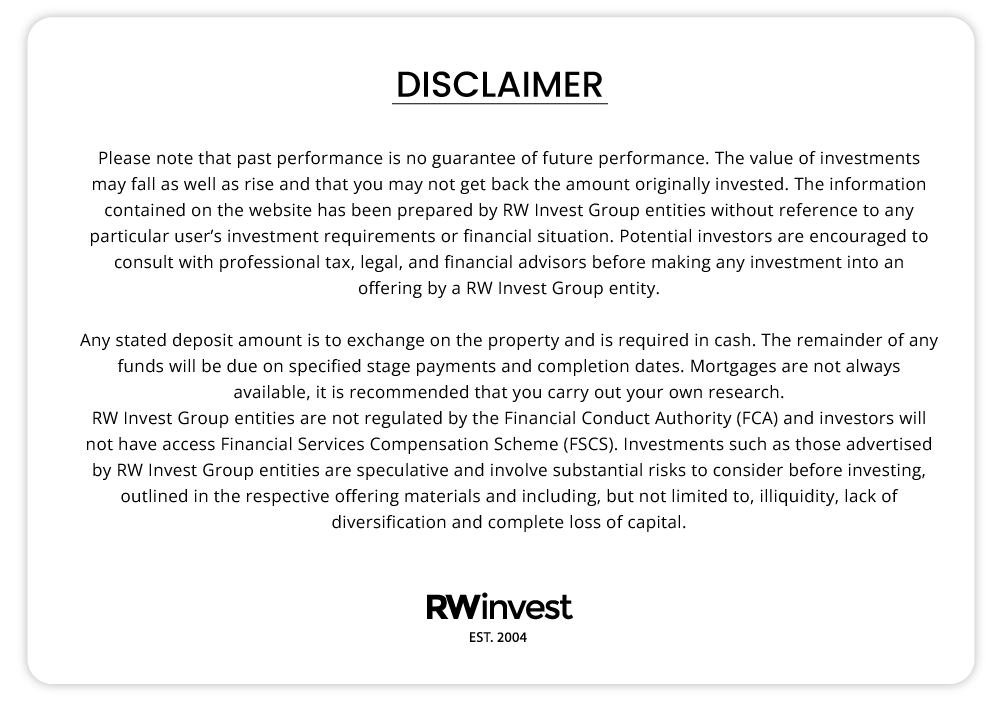- Housing Supply and Demand Gap is Further Widening
- How Do Supply and Demand Affect the Housing Market?
- So What Key Factors Have Been Affecting Housing Supply and Demand?
- UK Housing Market Supply
- When Will Supply Change in the Housing Markets?
- Considering Investing in the UK Housing Market? - RWinvest Can Help
Housing Supply and Demand Gap is Further Widening
Demand in the UK housing market remains high, while supply is low, making the widest housing market supply and demand gap in almost ten years.
The demand for housing in the UK is causing an increase in house prices for properties already on the market. It is also putting pressure on new-builds as more people look to invest.
The surge in market demand and prices has been driven by the stamp duty holiday.
The pandemic has also influenced people to buy new homes or property as they adapt to working from home. This has been one of the biggest housing market trends in recent years.
According to Zoopla, the number of UK properties on the market decreased to its lowest in more than six years.
The lack of housing stock could result in the market slowing down as we come to the end of 2021 and into the start of the new year, as buyers wait for properties to become available.
In this content, you will find information on:
- How Do Supply and Demand Affect the Housing Market?
- UK Housing Market Supply.
- When Will Supply Change in the Housing Markets?

How to Build a Property Portfolio, Get Started Now!
Tips on how to start building your property portfolio with tools for success.
How Do Supply and Demand Affect the Housing Market?
When it comes to supply and demand, the UK housing market provides a great example of how it works.
The housing market relies on supply and demand as it is considered a transactional market that uses properties.
In the property industry, when the demand for properties is high and the housing market supply is low, home prices often rise.
The Land Registry states that the average price of a property in the UK rose by 10.6% year-on-year in August to reach £264,244.
In England alone, the average house price increased by 7.0% over the year to July 2021, now sitting at £269,945 according to Land Registry data from September 2021.

Last Chance to Invest in Luxury Waterfront Apartments
Limited time offer! Back-to-market 1-bed units in one of our best-ever developments
So What Key Factors Have Been Affecting Housing Supply and Demand?
Housing Market Basics
There are several basic economic factors that affect the level of elasticity of demand and supply in the housing market.
If there are more home buyers and investors wanting to make a purchase and there are limited homes available to buy, this will cause prices to increase.
Whenever there is a change in property price, it creates a change in demand, pushing elasticity to its highest.
Incomes of households will have a notable effect on the demand for property. An increase in income may result in higher demand.
People may invest in bigger properties or buy a second property to rent out, which will cause a shift in the housing market supply and demand curve.
Another factor can be down to the lack of new homes or limitations on fixing up existing ones to relist on the property market. This is in large part due to the pandemic and lockdown causing delays with the building materials, construction and the renovation process.
Hopefully, the worst of the pandemic is behind us, so housing stock will likely increase as development and new home construction resumes.
Stock may also increase as people start to move homes. Families may be looking for larger properties with more space, and others will be securing their first home.
According to Zoopla’s Head of Research, people are reassessing their homes following the Coronavirus pandemic last year as they change the way they work and live.
As more people adapt to flexible working routines, there is more leeway to move away from the office.
Due to the lack of new homes on the market, or perhaps financial circumstances have changed – either way, others might look to rent properties, which is great news for buy to let investors and the rental market.
Research by Shawbrook Bank found that two-thirds of landlords (67%) said they are positive about their prospects in the next year.
Low Interest Rates
Lower interest rates on loans from mortgage lenders also affect housing demand as people are more likely to commit to taking on a mortgage.
Mortgage rates affect price elasticity in housing as more people can afford to take on debt when rates are lower, allowing them to pay a bit more for properties resulting in increased elasticity of demand.
The reduced loan interest rates have allowed more buyers to enter the housing market, creating more demand.
As low interest rates remain and there is still a limited supply of housing stock, we could see further rises in house prices in the coming months.
Stamp Duty Holiday
During stamp duty holiday deadlines in June and September, housing transactions peaked as buyers rushed to complete to save on tax.
Data from HM Revenue and Customs (HMRC) shows that 165,720 sales went through in September, up 67% on August’s figure.
The demand for sales to be processed naturally slowed down the market due to a lack of housing supply.
Further strain was put on the supply and demand gap as property investors and first-time buyers increased demand levels but had no property to sell.
Even though tax savings have come to an end for buyers, more sellers may now list their properties for sale, who were previously put off by the frantic activity earlier this year, so we should see supply start to increase.
Great news for future homeowners who have been waiting for new properties to come to the market!

Unbeatable Views, Unbeatable Returns
Secure a 2-bed apartment in this landmark development boasting panoramic views of Liverpool’s Waterfront.
UK Housing Market Supply
In order to keep the housing market supply afloat, the industry needs to consider the importance of new-builds.
Investors are seeing the benefits of securing new housing due to high tenant demand, resulting in reliable rental income and long term house price growth.
First-time buyers can also purchase some new-build properties through the Help to Buy scheme, which should help close the housing market gap.

Get Your FREE Liverpool Investment Guide
Everything you need to know about investing in Liverpool, one of the UK’s hottest investment cities.
When Will Supply Change in the Housing Markets?
Even with new-builds and sellers listings, supply is expected to remain low as we enter the new year.
It’s a slow process to repair housing stock levels. Even with strong seasonal trends at the start of the year, buyers will undoubtedly have to wait until the second half of 2022 for more stock to become available.
If you’re looking to make a property investment, purchasing units in new build developments is a good way to secure a high-quality property without having to wait for more housing market supply to become available.

Liverpool's Biggest, Boldest Development!
Last chance to invest! Earn up to £28k Annually with 6% assured yields.
Considering Investing in the UK Housing Market? - RWinvest Can Help
We hope you’ve enjoyed our blog on the UK housing market supply.
If you want to enquire about the latest buy to let properties on the market, then RWInvest is here to help.
We are an award-winning property investment company with over 17 years of experience in buy to let investments and off-plan properties.
Our expert sales team can talk you through the different options available to help you get started on your investment journey.
Disclaimer: This content was originally written in November 2021. By the time you read it, some of the statistics used may have changed.
For the latest on the UK housing market in 2024, take a look at our updated investment guides.
UK Housing Market Supply and Demand Gap Widens





